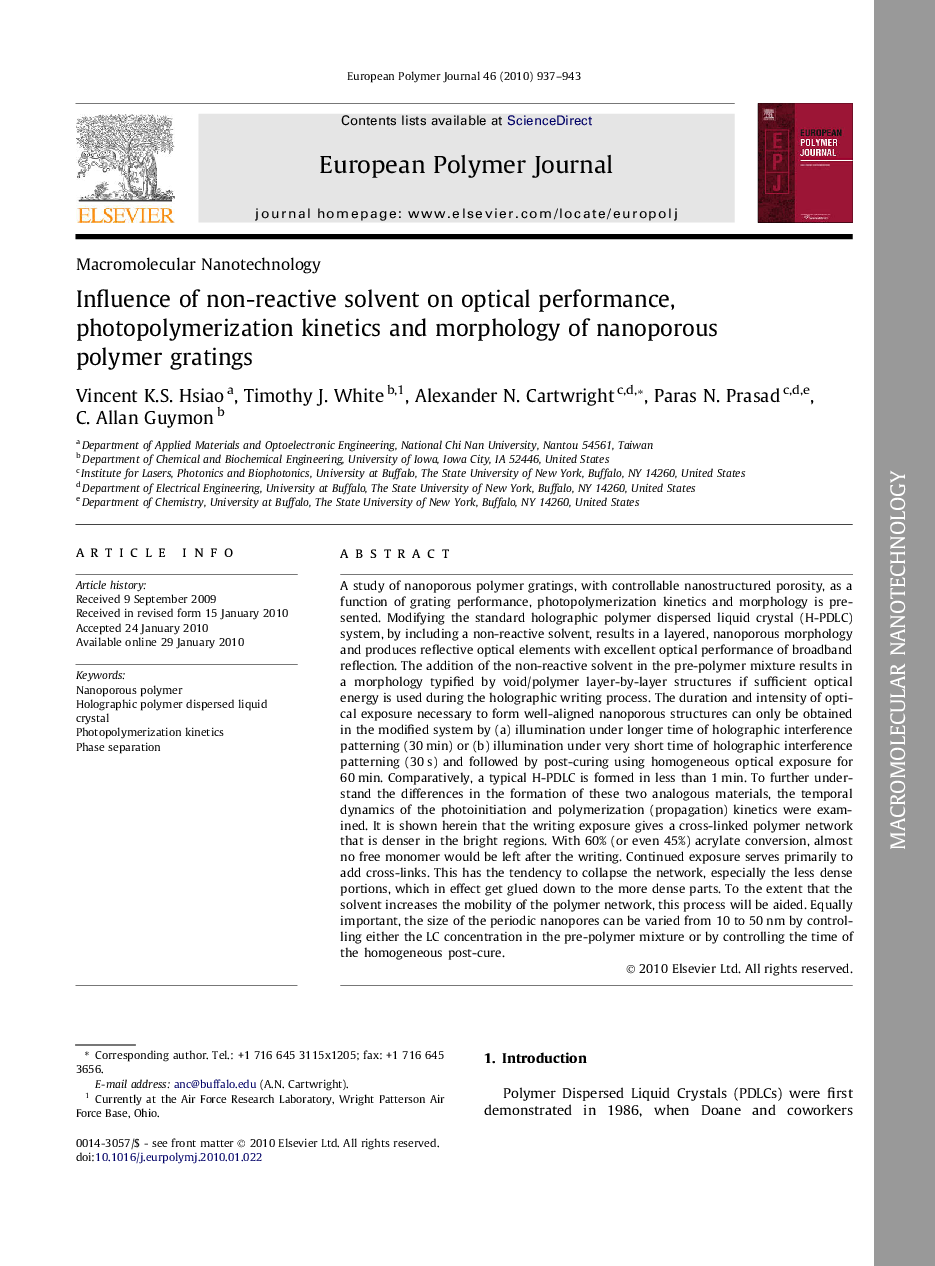| کد مقاله | کد نشریه | سال انتشار | مقاله انگلیسی | نسخه تمام متن |
|---|---|---|---|---|
| 1396083 | 984163 | 2010 | 7 صفحه PDF | دانلود رایگان |
عنوان انگلیسی مقاله ISI
Influence of non-reactive solvent on optical performance, photopolymerization kinetics and morphology of nanoporous polymer gratings
دانلود مقاله + سفارش ترجمه
دانلود مقاله ISI انگلیسی
رایگان برای ایرانیان
کلمات کلیدی
موضوعات مرتبط
مهندسی و علوم پایه
شیمی
شیمی آلی
پیش نمایش صفحه اول مقاله

چکیده انگلیسی
A study of nanoporous polymer gratings, with controllable nanostructured porosity, as a function of grating performance, photopolymerization kinetics and morphology is presented. Modifying the standard holographic polymer dispersed liquid crystal (H-PDLC) system, by including a non-reactive solvent, results in a layered, nanoporous morphology and produces reflective optical elements with excellent optical performance of broadband reflection. The addition of the non-reactive solvent in the pre-polymer mixture results in a morphology typified by void/polymer layer-by-layer structures if sufficient optical energy is used during the holographic writing process. The duration and intensity of optical exposure necessary to form well-aligned nanoporous structures can only be obtained in the modified system by (a) illumination under longer time of holographic interference patterning (30Â min) or (b) illumination under very short time of holographic interference patterning (30Â s) and followed by post-curing using homogeneous optical exposure for 60Â min. Comparatively, a typical H-PDLC is formed in less than 1Â min. To further understand the differences in the formation of these two analogous materials, the temporal dynamics of the photoinitiation and polymerization (propagation) kinetics were examined. It is shown herein that the writing exposure gives a cross-linked polymer network that is denser in the bright regions. With 60% (or even 45%) acrylate conversion, almost no free monomer would be left after the writing. Continued exposure serves primarily to add cross-links. This has the tendency to collapse the network, especially the less dense portions, which in effect get glued down to the more dense parts. To the extent that the solvent increases the mobility of the polymer network, this process will be aided. Equally important, the size of the periodic nanopores can be varied from 10 to 50Â nm by controlling either the LC concentration in the pre-polymer mixture or by controlling the time of the homogeneous post-cure.
ناشر
Database: Elsevier - ScienceDirect (ساینس دایرکت)
Journal: European Polymer Journal - Volume 46, Issue 5, May 2010, Pages 937-943
Journal: European Polymer Journal - Volume 46, Issue 5, May 2010, Pages 937-943
نویسندگان
Vincent K.S. Hsiao, Timothy J. White, Alexander N. Cartwright, Paras N. Prasad, C. Allan Guymon,